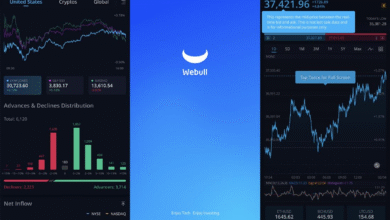Bitcoin Price Analysis: Bear Flag Pattern Develops Today
Bitcoin price analysis is critical for understanding market trends and making informed trading decisions. As the cryptocurrency currently hovers around $114,930, traders are closely monitoring key support and resistance levels. The presence of a potential Bitcoin bear flag pattern on the four-hour chart raises concerns about future price movements, especially when paired with declining trading volume. Investors must consider how fluctuations in Bitcoin’s price support near $112,000 and the resistance levels around $116,500 may impact their strategies. Engaging in detailed cryptocurrency analysis can provide invaluable insights into market behavior as Bitcoin navigates through this consolidation phase.
When delving into the intricacies of Bitcoin’s market dynamics, one cannot overlook the importance of price evaluations that encompass patterns and investor sentiment. Analyzing the behavior of Bitcoin price movements, particularly in the context of established thresholds like support zones and resistance barriers, paves the way for strategic trading decisions. Observers note a potential consolidation resembling a bearish flag formation, indicating the possibility of further declines without strong buying interest. Furthermore, understanding the interplay between trading volume and price fluctuations enhances one’s approach to cryptocurrency investment. These analyses not only assist in predicting immediate trends but also in grasping the long-term potential of Bitcoin within the cryptocurrency landscape.
Understanding Bitcoin Price Analysis and Market Sentiment
Bitcoin price analysis reveals a crucial juncture for investors as the cryptocurrency navigates through fluctuations in market sentiment. Currently priced at $114,930, Bitcoin’s performance over recent days illustrates the volatility characteristic of this asset class. Observing Bitcoin’s market dynamics, analysts note ongoing consolidation following the substantial gains made in July. As traders process previous performance and current indicators, understanding psychological price levels becomes essential. Crucially, market support at $112,000 forms a vital threshold, while investors eye the resistance range between $116,500 and $118,000 as pivotal points for market action.
In-depth analysis of price trends demonstrates that Bitcoin’s recent movements are closely tied to trading volumes and investor behaviors. With a recent trading volume of $34.71 billion, the activity underscores an engaged market, yet suggests that caution is warranted due to the low volume recovery after the recent dip to $111,919. This situation indicates that while interest remains high, buying demand may not be sufficient to push the price upward without external stimuli or positive developments, making ongoing analysis crucial.
Identifying Bitcoin Price Support and Resistance Levels
Identifying Bitcoin’s critical support and resistance levels helps traders make informed decisions in this dynamic environment. Currently, Bitcoin’s support is firmly positioned at $112,000, which, if breached, could attract additional selling pressure and prompt a downward trajectory towards stronger support around $108,000. Conversely, the resistance levels at $116,500 to $118,000 remain crucial as they mark the boundaries for potential upward momentum. A failure to overcome these hurdles suggests that a bearish trend may be reinforced unless significant market catalysts emerge.
Technical traders often utilize these levels to establish their trading strategies, especially in uncertain markets. Understanding where Bitcoin’s price may encounter obstacles or find support allows miners, institutional investors, and retail traders alike to plan their entries and exits strategically. With oscillators signaling a mixed outlook, it’s crucial for market participants to remain wary of these support and resistance thresholds in order to better navigate the market’s inherent unpredictability.
Analyzing Bitcoin’s Bear Flag Pattern Formation
The recent formation of a bear flag on Bitcoin’s 4-hour chart signals potential downside risks for the cryptocurrency. A bear flag typically emerges after a substantial price decline, suggesting a consolidation period before resuming downward momentum. The flag formation is often characterized by a tight, parallel price trend that follows an initial downward move, which in this case is evidenced by Bitcoin’s dip to $111,919 after facing resistance at $118,904. If Bitcoin fails to maintain support at $113,000, it could trigger a breakdown, leading to further tests of lower support levels.
Traders who recognize this technical pattern may adopt a bearish outlook, using it to inform their short-selling strategies based on anticipated price movements. Specifically, if Bitcoin drops below the identified support, market sentiment could intensify, leading to increased trading volumes and additional cascading effects. Thus, monitoring the bear flag pattern is vital for traders looking to capitalize on potential market declines.
Impact of Trading Volume on Bitcoin’s Price Action
Bitcoin’s trading volume plays a significant role in understanding its price action and market behavior. Currently, with a trading volume of $34.71 billion, there is a clear indication of a responsive market, yet traders should be wary of the recent declines in volume during price recoveries. Low volume during upward movements can suggest weak buying interest and may foreshadow reversals. Without significant buying pressure, upward price movements may not hold, leading again to tests of support levels like $113,000.
Conversely, a surge in trading volume can act as a strong affirmation of bullish trends, particularly when Bitcoin breaks through critical resistance levels. Volume analysis becomes essential for traders to systematically assess market sentiment; understanding whether volume accompanies price movements can vastly influence decision-making processes. With the current market environment showing mixed signs, the focus on trading volume remains vital.
Decoding Oscillator Signals for Informed Trading Decisions
Oscillator signals provide integral insights into market momentum and potential trend reversals, serving as key indicators for traders in the Bitcoin market. The RSI at 49 indicates neutral momentum, while other oscillators such as the Stochastic and CCI suggest mixed signals, creating a complex narrative for traders trying to gauge future moves. The prevailing bearish signals from oscillators highlight the indecisiveness surrounding price action, indicating a fragmented market that could sway either way based on upcoming catalyst events.
Understanding these oscillator signals enables traders to refine their strategies accordingly. A low RSI may prompt traders to consider longer-term buy positions while balancing against potential short trades if bearish signals persist. This careful calibration of oscillator readings against real-time market conditions is crucial in executing informed trading decisions that align with Bitcoin’s volatility.
Long-term vs. Short-term Moving Averages: What Do They Indicate?
The analysis of both short-term and long-term moving averages reveals crucial insights into Bitcoin’s market structure and potential future movements. Currently, short-term moving averages are positioned above the current price, suggesting bearish conditions, while longer-term averages have maintained a bullish posture. This divergence indicates a potential struggle between short-term bearish trends and a long-term bullish outlook, which could lead to significant market shifts should they converge.
Traders often look at moving average crossovers as signals for entry and exit points. Short-term bears may take action at resistances while long-term bulls assess opportunities when prices dip down to support. Hence, awareness of moving average placements helps traders align their strategies with broader market trends, particularly in navigating the volatile landscape of cryptocurrency trading.
Key Catalysts That Could Shift Bitcoin’s Price Direction
In the cryptocurrency market, various catalysts can significantly impact Bitcoin’s price direction, shifting market sentiment almost instantaneously. Events such as regulatory developments, large institutional purchases, and macroeconomic news can introduce volatility that either propels Bitcoin upward or drives it down. Given the current consolidation phase, traders are particularly alert for any market-moving news that might break the current neutral to bearish bias.
Furthermore, technological advancements or adaptations within the Bitcoin network can also serve as potential catalysts. Improvements in transaction efficiency or security can garner investor confidence and subsequently lead to increased trading volume. Such developments often serve as fundamental reasons for price movements that traders can anticipate and prepare for.
Navigating Market Indecision: Strategies for Bitcoin Traders
Navigating through market indecision requires traders to adopt adaptive strategies that can respond to sudden shifts in sentiment. In the context of Bitcoin’s current market environment, where oscillators signal mixed signals and traders experience uncertainty, pivotal strategies include setting clear stop-loss orders to manage risks and proactively looking for breakout opportunities. Utilizing techniques such as dollar-cost averaging can also help traders mitigate risks associated with volatility, gradually building positions over time.
Additionally, remaining tethered to market news and technical analysis enables traders to cultivate situational awareness that could lead to timely decisions. For example, monitoring Bitcoin’s price action around support and resistance zones, coupled with volume changes, equips traders with the necessary information to react swiftly as conditions evolve. Strategically informed trading during periods of uncertainty allows traders to navigate Bitcoin’s ups and downs while positioning themselves favorably.
The Future of Bitcoin: What Investors Should Consider
As Bitcoin continues to capture attention as a leading cryptocurrency, investors must consider various factors when contemplating their positions in this digital asset. The interplay between market dynamics, trading volumes, and technical analyses, including the potential bear flag pattern, suggests that investor perspectives must be adaptive and grounded in forecasting potential outcomes based on observed behaviors. As traders weigh market bears and bulls, the importance of diversifying portfolios with alternative cryptocurrencies can enhance risk management strategies amidst Bitcoin’s unpredictable fluctuations.
Moreover, keeping abreast of broader market trends, including regulatory changes and institutional adoption, remains paramount for investors looking to capitalize on Bitcoin’s market potential. Understanding that the market is influenced heavily by external sentiments fosters a holistic approach that is essential for long-term success in cryptocurrency investment. Engaging with educational resources and analysis tools can empower investors to make informed choices that align with both immediate and long-term financial goals.
Frequently Asked Questions
What is the significance of the Bitcoin bear flag pattern in price analysis?
The Bitcoin bear flag pattern is a crucial technical indicator that signals a potential continuation of a downward trend. It often forms during a consolidation phase after a significant price drop, indicating that sellers may still dominate the market. Traders analyze this pattern closely to anticipate further downside movements.
How does Bitcoin trading volume affect price analysis?
Bitcoin trading volume plays a vital role in price analysis by providing insights into market strength. High trading volumes often confirm price movements, whether upward or downward, while low volume suggests weaker momentum. Analyzing trades helps identify potential reversals or continuations in Bitcoin trends.
What are the current Bitcoin price support levels and their importance?
Current Bitcoin price support levels are critical for price analysis, with key support established at $112,000 and stronger support at $108,000. These levels act as price floors where buying may increase, preventing further declines. If Bitcoin fails to hold above these support levels, it could signal bearish sentiment and further selling pressure.
How do Bitcoin resistance levels impact trading strategies?
Bitcoin resistance levels, such as the ongoing resistance between $116,500 and $118,000, are essential in price analysis for traders. These levels indicate where selling pressure may increase, often leading to price reversals. Understanding resistance helps traders set profit targets and devise exit strategies.
What role does cryptocurrency analysis play in understanding Bitcoin’s price movements?
Cryptocurrency analysis encompasses various techniques to evaluate Bitcoin’s price movements, including technical and fundamental analysis. By examining trends, trading volume, and chart patterns like bear flags, traders can better understand potential price action and make informed trading decisions.
| Key Points | Details |
|---|---|
| Current Price | $114,930 as of Tuesday morning. |
| Market Cap | $2.28 trillion. |
| 24-hour Trading Volume | $34.71 billion. |
| Price Range (24hrs) | $113,941 to $115,591. |
| Support Levels | $112,000 (primary), $108,000 (stronger support). |
| Resistance Levels | $116,500 to $118,000. |
| Bear Flag Pattern | Potential formation indicating further downside risk if support breaks. |
| Short-term Sentiment | Neutral to bearish unless price breaks above $115,700. |
| Technical Indicators | Mixed signals with oscillators showing some bearishness. |
Summary
In summary, Bitcoin price analysis indicates that the cryptocurrency is currently experiencing a phase of consolidation following a significant rally in July. With critical support levels established, the immediate future will depend on how the price reacts around these levels. A decisive break above key resistance could spark renewed bullish momentum, whereas a drop below support could result in increased downside risks. Investors and traders should keep a close eye on ongoing developments in the Bitcoin market to navigate their strategies effectively.




